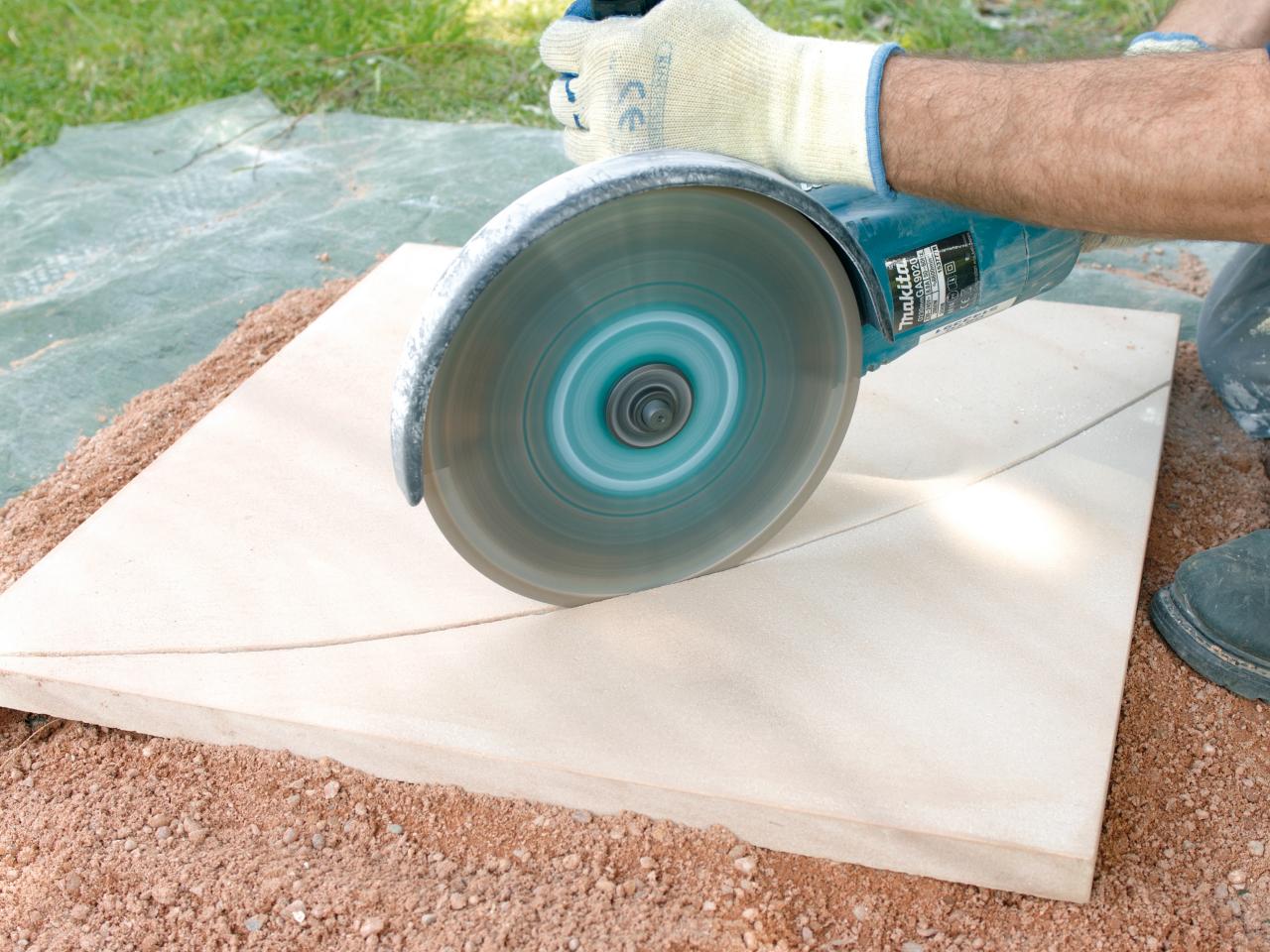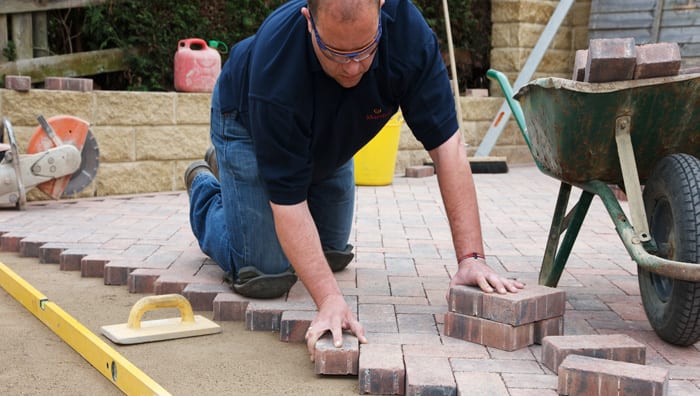Thinking about tackling a paving project? You might find yourself wondering, “Can you cut paving slabs with a circular saw?” Well, you’ve come to the right place! In this article, we’ll explore the possibilities and techniques of using a circular saw for cutting paving slabs. Whether you’re a DIY enthusiast or an aspiring handyman, we’ve got you covered!
Using a circular saw to cut paving slabs can be a game-changer when it comes to completing your project efficiently and with precision. But before you embark on this endeavor, it’s essential to understand the dos and don’ts of using a circular saw for this purpose.
In this informative guide, we’ll discuss the equipment you’ll need, the steps to follow, and some helpful tips to ensure a successful project. So, let’s dive right in and discover the wonders of cutting paving slabs with a circular saw!
- Prepare the workspace by clearing any debris and ensuring a stable surface.
- Wear appropriate safety gear like gloves, goggles, and ear protection.
- Measure and mark the cutting line on the paving slab.
- Set the circular saw to the appropriate depth for the slab.
- Carefully cut along the marked line, applying even pressure and keeping the saw steady.
- After cutting, use a chisel to remove any remaining material and smooth the edges.
- Clean up the area and dispose of any waste responsibly.

Can You Cut Paving Slabs with a Circular Saw?
When it comes to cutting paving slabs, many people assume that a specialized tool is necessary. However, if you have a circular saw lying around, you may be wondering if it can do the job. In this article, we will explore whether or not you can cut paving slabs with a circular saw. We will delve into the proper techniques, safety precautions, and the benefits of using a circular saw for this task. So, if you’re ready to get your DIY on, let’s dive in!
The Benefits of Using a Circular Saw
No Need to Rent or Buy Expensive Equipment
One of the main advantages of using a circular saw to cut paving slabs is that it eliminates the need to rent or buy specialized equipment. Circular saws are a staple tool in many households, making them easily accessible and cost-effective. By utilizing the tools you already have, you can save time and money.
Efficient and Precise Cuts
Circular saws are known for their ability to make smooth and accurate cuts. With the right blade and proper technique, you can achieve precise cuts on various materials, including paving slabs. This ensures that your project will have clean edges and fit together seamlessly.
Choosing the Right Blade for Your Circular Saw
Before you start cutting paving slabs with a circular saw, it’s crucial to choose the right blade for the job. The type of blade you select will depend on the material of the slabs you’re cutting. For concrete or masonry slabs, opt for a diamond-tipped blade designed specifically for these materials. Diamond blades are durable and can handle the tough nature of paving slabs without becoming dull or damaged.
On the other hand, if you’re cutting slabs made of softer materials like clay or porcelain, a standard masonry blade will suffice. It’s essential to use the appropriate blade to ensure efficient cutting and prevent any potential damage to the saw or the slabs themselves.
Tips:
- When selecting a blade, check the manufacturer’s recommendations and ensure it is compatible with your circular saw.
- Consider the thickness of the paving slabs. Thicker slabs may require a blade with a higher tooth count to ensure a smoother cut.
- Always wear appropriate safety gear, including safety glasses, gloves, and ear protection, when operating a circular saw.
Preparing the Work Area and Slabs
Before you start cutting, it’s important to create a safe and organized work area. Clear any debris, and make sure the slab is secured in place to prevent movement during the cutting process. This can be done using clamps or by asking someone to hold the slab firmly.
Measure and mark the area you intend to cut on the slab. Use a pencil or chalk to create a visible guideline that will help you maintain accuracy and prevent mistakes. Double-check your measurements to avoid any unnecessary errors before making the first cut.
Tips:
- Consider using a straightedge or a guide to ensure a straight and even cut.
- Wet the surface of the slab with water to minimize dust and keep the blade cool during the cutting process, especially when cutting concrete or masonry slabs.
Cutting Techniques
Now that everything is in place, it’s time to start cutting. Follow these steps to achieve clean and precise cuts:
- Position the circular saw with the blade aligned with the marked cutting line.
- Hold the saw firmly with both hands and activate the safety mechanism.
- Slowly lower the blade onto the slab, ensuring that it is perpendicular to the surface.
- Apply steady pressure and let the blade do the work. Avoid forcing the saw or pushing too hard, as this can cause the blade to bind or kick back.
- Continue cutting along the marked line, using a smooth and controlled motion.
- Once you have completed the cut, lift the saw and allow the blade to come to a complete stop before setting it aside.
Remember to take breaks when necessary, as cutting can be physically demanding. Stay focused, maintain a steady pace, and prioritize safety throughout the entire process.
Can You Cut Paving Slabs with a Circular Saw?
- Yes, you can cut paving slabs with a circular saw.
- Make sure to use a diamond blade designed for cutting stone.
- Wear safety goggles and gloves while cutting to protect yourself.
- Set the saw to the appropriate depth and align the cutting line.
- Take your time and make slow, steady cuts to avoid chipping or cracking the slabs.
Frequently Asked Questions
Have you ever wondered if you can use a circular saw to cut paving slabs? Read on to find answers to some common questions about cutting paving slabs with a circular saw.
1. How can I cut paving slabs with a circular saw?
To cut paving slabs with a circular saw, you’ll need a diamond blade specifically designed for cutting masonry. Before you start, make sure to wear safety goggles and a dust mask for protection. Set the depth of the saw blade to slightly deeper than the thickness of the paving slab. Place the slab on a stable surface and use a straightedge to guide the saw along your desired cut line. Move the saw slowly and steadily, keeping a firm grip on the saw and maintaining a straight path. Take breaks occasionally to let the blade cool down and minimize the risk of overheating.
Once you’ve completed your cut, be sure to turn off the circular saw and wait for the blade to come to a complete stop before removing it from the paving slab. Remember to handle the saw and the paving slab with caution to avoid accidents or injury.
2. Can I use any type of circular saw to cut paving slabs?
While a circular saw can be used to cut paving slabs, it’s important to use the right type of saw for the job. Opt for a circular saw that is specifically designed for cutting masonry or has a diamond blade attachment available. These types of saws are designed to handle the tough and abrasive nature of materials like paving slabs. Using the wrong type of saw may result in inefficient cutting or damage to the saw or the paving slab.
Before attempting to cut paving slabs with a circular saw, always check the manufacturer’s instructions and recommendations to ensure that your specific saw is suitable for this task. If in doubt, consult a professional or seek advice from a knowledgeable salesperson at your local hardware store.
3. Do I need any special safety precautions when cutting paving slabs with a circular saw?
Yes, it’s important to take specific safety precautions when cutting paving slabs with a circular saw. Always wear safety goggles to protect your eyes from any debris or dust that may be generated during the cutting process. Additionally, a dust mask should be worn to prevent the inhalation of fine particles. The noise generated by the circular saw can also be quite loud, so using ear protection is recommended.
Make sure you have a stable and secure work surface before cutting paving slabs. This will help prevent accidents or slips while operating the saw. It’s also crucial to handle the circular saw with care, keeping both hands on the tool and maintaining a firm grip at all times. Always follow the manufacturer’s safety guidelines and recommendations to ensure a safe cutting experience.
4. Can I cut paving slabs with a regular wood-cutting circular saw blade?
Using a regular wood-cutting circular saw blade to cut paving slabs is not recommended. Paving slabs are made of tough and abrasive materials, such as concrete or stone, which can quickly dull or damage a wood-cutting blade. This can lead to inefficient cutting, increased risk of accidents, and potential damage to the saw itself.
It’s essential to use a diamond blade specifically designed for cutting masonry when working with paving slabs. Diamond blades are designed to withstand the abrasive nature of these materials and provide clean, precise cuts. Investing in the right blade for the job will not only ensure better results but also extend the lifespan of your circular saw.
5. What are the advantages of using a circular saw to cut paving slabs?
Using a circular saw to cut paving slabs offers several advantages. Firstly, circular saws are versatile tools that can be adjusted for different cutting depths, allowing you to create precise and accurate cuts. Additionally, circular saws are portable and relatively easy to handle, making them convenient for DIY projects or working in tight spaces.
Compared to other cutting methods, such as using a chisel and hammer or a wet saw, a circular saw can provide faster results and reduce physical exertion. With the right blade and proper techniques, you can achieve clean cuts with minimal effort. However, it’s important to keep in mind the safety precautions and use the appropriate blade for cutting paving slabs to ensure optimal performance and safety.

Summary
Cutting paving slabs with a circular saw is possible, but safety precautions are necessary. To avoid accidents, it is important to wear protective gear like safety goggles and gloves. Additionally, using a diamond-tipped blade and marking the cutting lines beforehand can help achieve cleaner and more precise cuts. Remember to cut slowly and steadily and use a guide to ensure straight lines.
It is important to note that choosing the right type of circular saw is crucial. A worm drive circular saw is better suited for cutting through tough materials like paving slabs. Lastly, always make sure to read the manufacturer’s instructions and consult a professional if needed. With the right approach, cutting paving slabs with a circular saw can be a successful DIY project.
